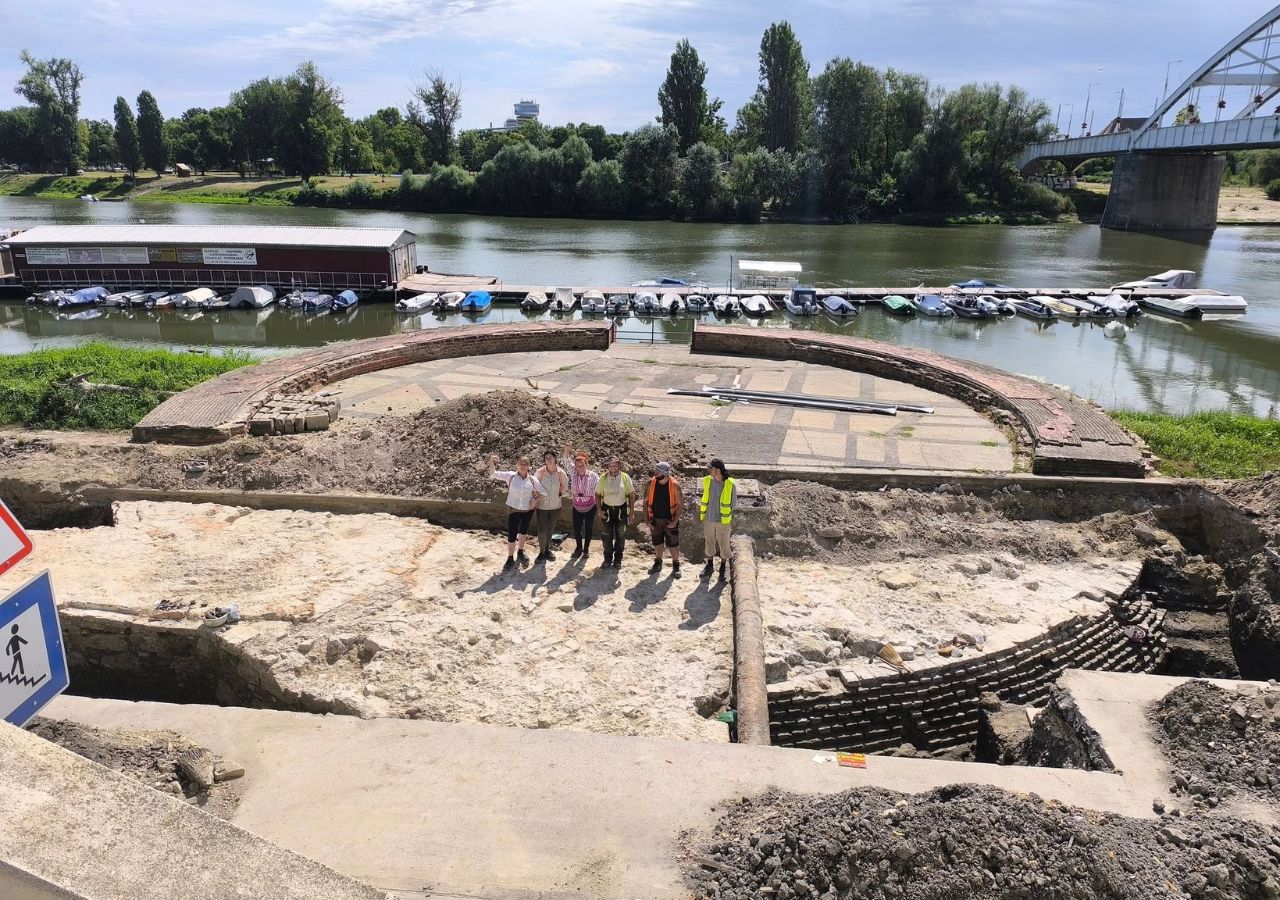Archaeologists uncover hidden sections of Szeged castle’s fortified tower

New excavations at the Huszár Mátyás Embankment have revealed previously hidden parts of one of the most intriguing remnants of Szeged Castle: the southeastern corner tower, more commonly known as the “water bastion.”
As reported in our earlier article, the full outline of the castle wall and its southeastern corner tower began to take shape during archaeological digs that started on 4 July. Initially, only the side facing the river was visible, but as excavations progressed, more of the tower was uncovered.
New findings from the archaeological dig
Lead archaeologist Csilla Molnár reported that both sides of the castle’s corner tower have now been uncovered during work along the Huszár Mátyás Embankment. This means pedestrians can now admire the nearly complete, curved form of the bastion. The dig confirmed that the two structural components are interconnected, suggesting they were constructed at the same time.
The tower walls are unique in both material and design: the vertical face of the bastion widens at the base, forming a skirt-like shape that added structural stability. Archaeologists discovered medieval ceramic fragments, floor tiles, and 19th-century clay pipes. Further research aims to provide a clearer picture of the tower’s construction date and its role in the life of the castle.

The historical significance of Szeged Castle
In the 16th century, the castle was considered the country’s largest lowland fortress. It stretched 330 meters in length and was 170 meters wide. Notably, it wasn’t built on a hill or incline but entirely on flat terrain—necessitating robust walls, ramparts, and water-filled moats for defence.
After the Turks were driven out, the castle came under Habsburg military control, and by the 18th century, it functioned more as a military warehouse and prison. The majority of the castle and its walls were destroyed following the Great Flood of Szeged in 1879, when much of the structure had to be demolished as part of the city’s reconstruction efforts. Local residents petitioned Emperor Franz Joseph to donate the fortifications to the city. When he agreed, the demolition of the castle began, and most of its walls disappeared from the cityscape.

Five days after the flood, Emperor Franz Joseph visited Szeged and brought a message of hope to its citizens:
“Szeged will be more beautiful than ever.”
The ongoing archaeological discoveries mark a significant step in understanding Szeged Castle’s past. As more details emerge, both locals and visitors have a valuable opportunity to connect with a vital piece of the city’s heritage.
Read more Hungarian history-related news on Daily News Hungary!
Read the following stories too:
- The mysterious tombstone in Budapest’s City Park: Who was buried beneath the word ‘FUIT’?
- Archaeologists uncover centuries of changes on Veszprém castle
- The Tiszazug Poison-mixers: A dark chapter in Hungarian criminal history
To read or share this article in Hungarian, click here: Helló Magyar







